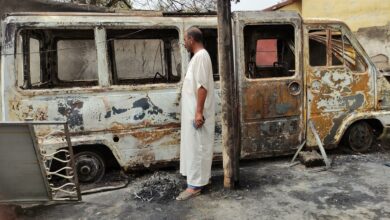Brazil’s Amazon has over 800 clandestine airstrips on indigenous lands: study

Rio de Janeiro, Feb 6 (EFE).- There are about 3,000 private airstrips in the Brazilian Amazon, of which more than half are clandestine and built in protected areas, where mining activities are prohibited by law, a study said Monday.
Of the 2,986 private airstrips built in the world’s largest rainforest, 58 percent do not appear in official records and 28 percent, or 804 runways, are located in indigenous and environmental reserves.
In total, 320 illegal airstrips, or 11 percent, are located in indigenous territories and 498, or 17 percent, in conservation units, according to the study by MapBiomas, an initiative involving NGOs, universities and technology companies to analyze land use.
MapBiomas used satellite images of mining activity in the Amazon for the study.
Most of the clandestine airstrips are in the Yanomami Indigenous Territory (75), followed by Raposa Serra do Sol (58), Kayapó (26), Munduruku (21) and Xingu Park (21).
According to the MapBiomas experts, the logistical problems of illegal mining, especially in indigenous and environmental reserves, where land and river routes are scarce, means that air access is required for the development of the activity.
“Whether by helicopters or light aircraft, illegal or legal airstrips co-opted by organized crime, much of the mining production in the Amazon is transported by air,” Cesar Diniz, technical coordinator of mine mapping for MapBiomas, said in the report.
The number of illegal miners who have arrived in the protected areas in recent years has resulted in violence and irreparable damage to the forest and its communities.
One of the worst affected has been the Yanomami reserve, where nearly 15,000 illegal miners are accused of causing a serious health crisis.
In this indigenous territory, which occupies some 10 million hectares and is home to between 27,000 and 30,000 indigenous people of this ethnic group, there have been several cases of malnutrition and diseases transmitted by miners or caused by toxic materials, such as mercury, which are used for gold extraction.
The government of President Luiz Inácio Lula da Silva ordered the withdrawal of illegal miners from the region, which is being monitored by the Federal Highway Police and National Force, with logistical support from the Armed Forces.
On one of the main roads of the border state of Roraima, EFE’s team saw Monday armed officers checking vehicles from neighboring municipalities, several of them belonging to illegal miners who were leaving the region.
Illegal mining increased considerably during the term of former far-right President Jair Bolsonaro (2019-2022), who promoted economic activities in the Amazon rainforest.
According to MapBiomas’ data, more than 91 percent of Brazil’s mining activity in 2021 was concentrated in the Amazon.
In the last 10 years, mining area in indigenous reserves has expanded by 625 percent, jumping from just over 3,000 hectares in 2011 to 60,000 hectares in 2021.
The biggest expansion of mining in indigenous reserves occurred between 2019 and 2021, when mining activity on the lands of indigenous people increased by 53.8 percent. EFE
mat/pd





